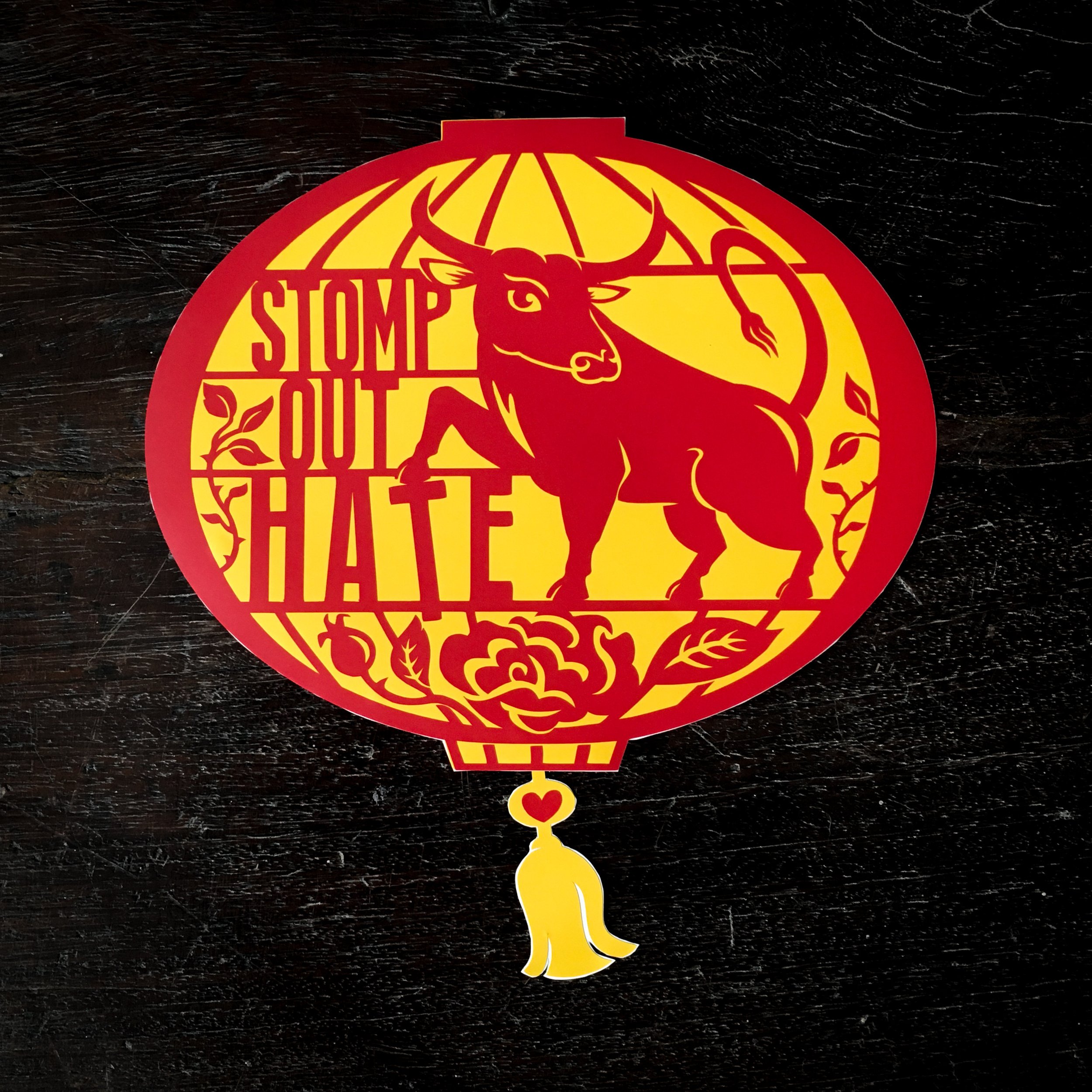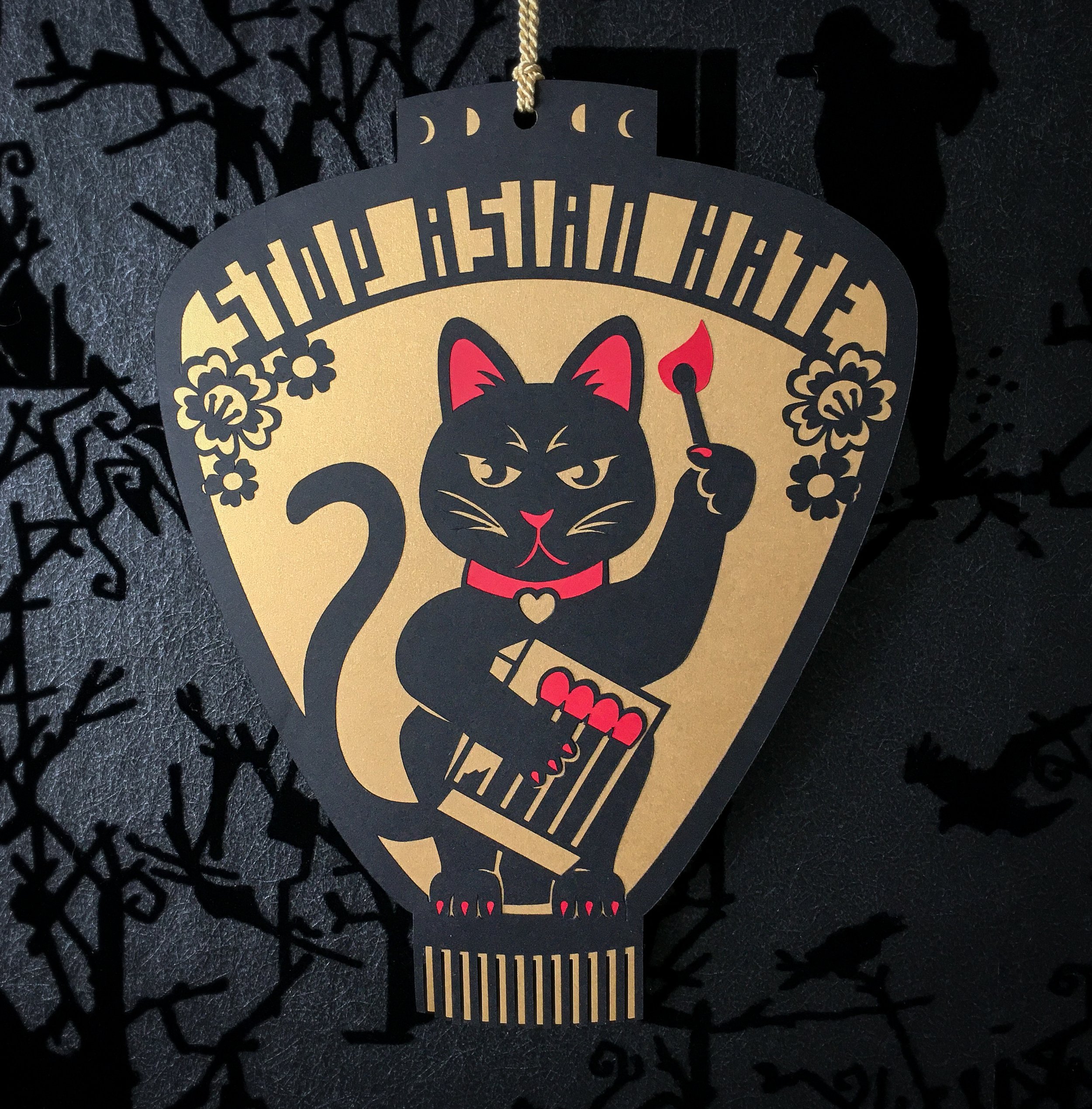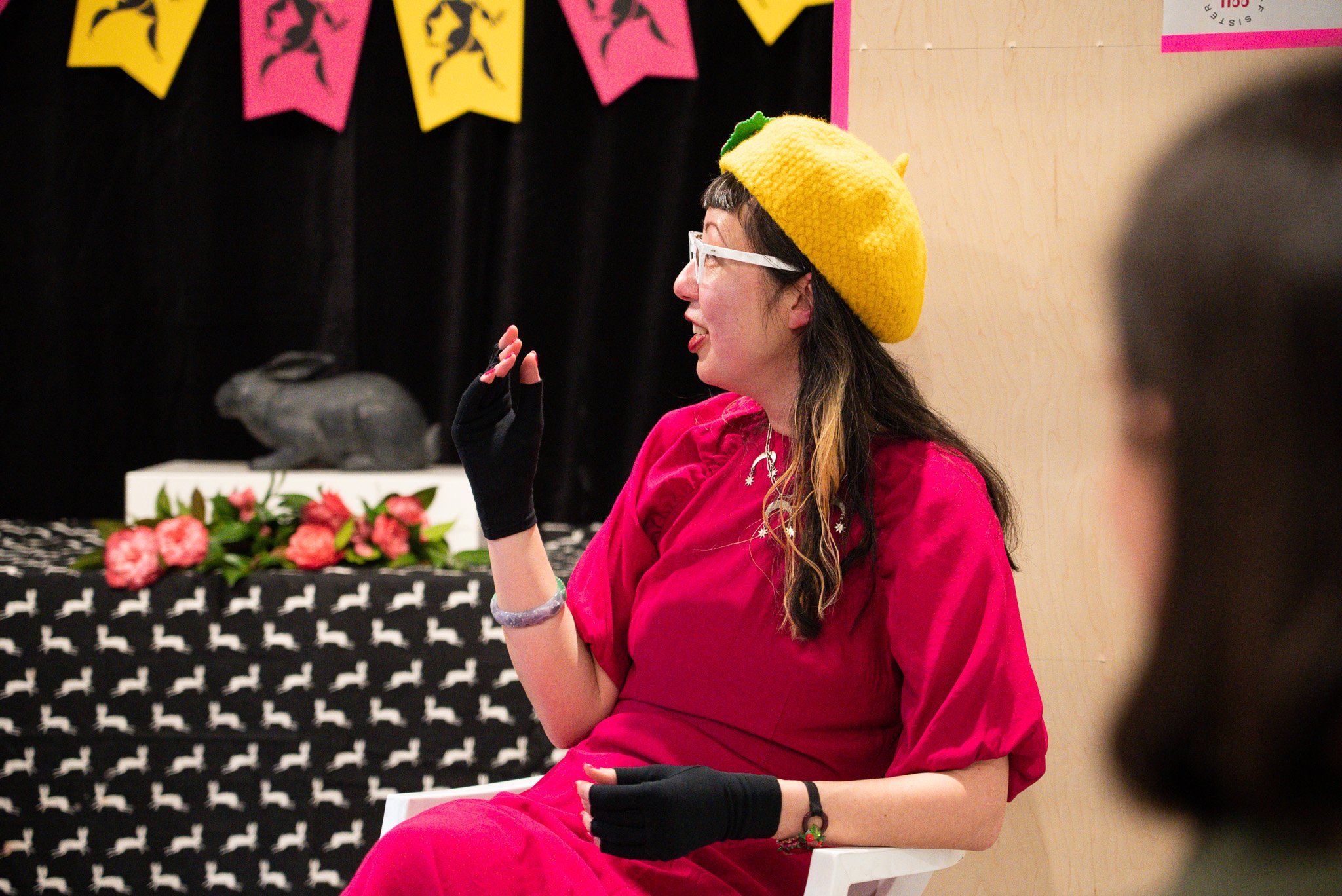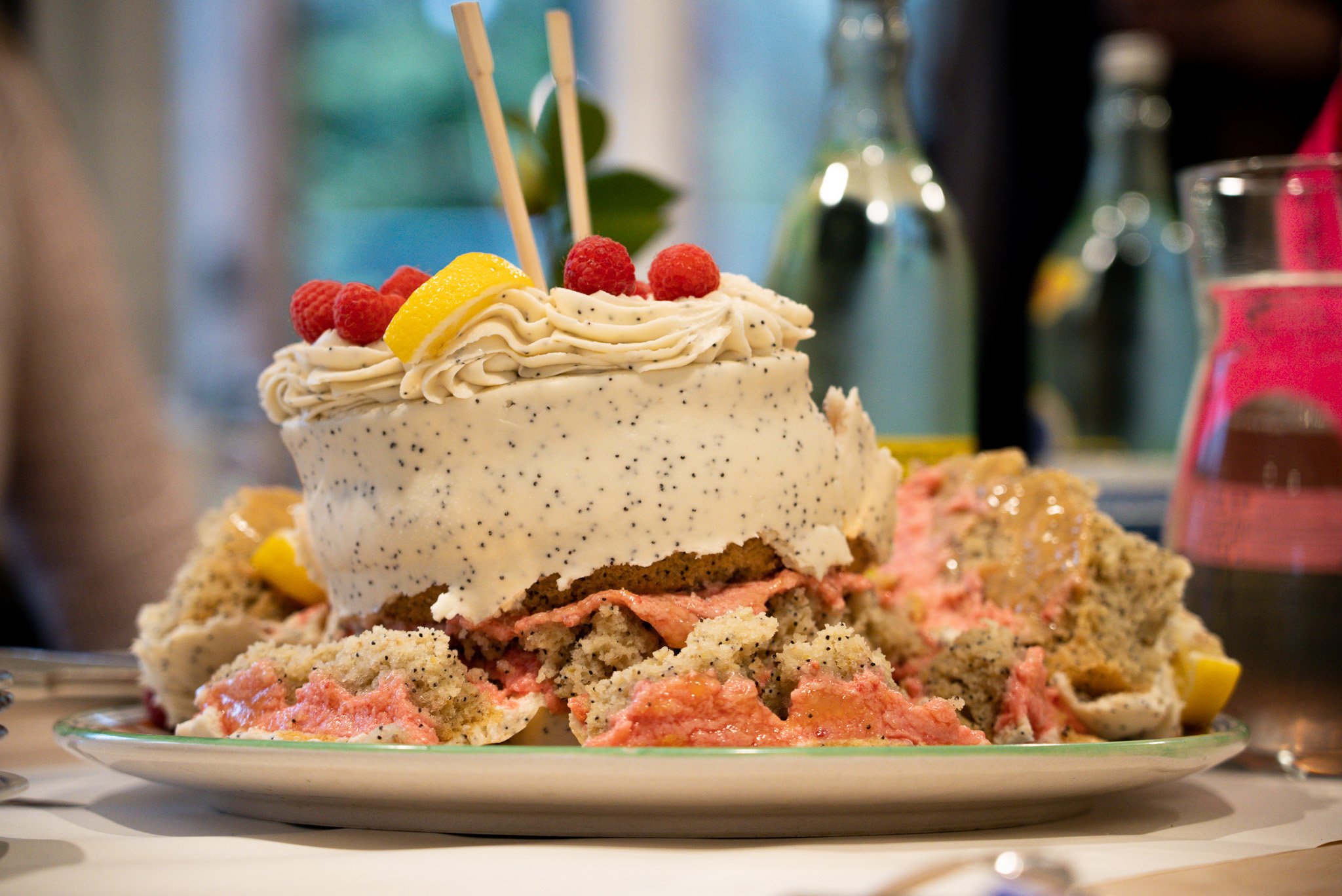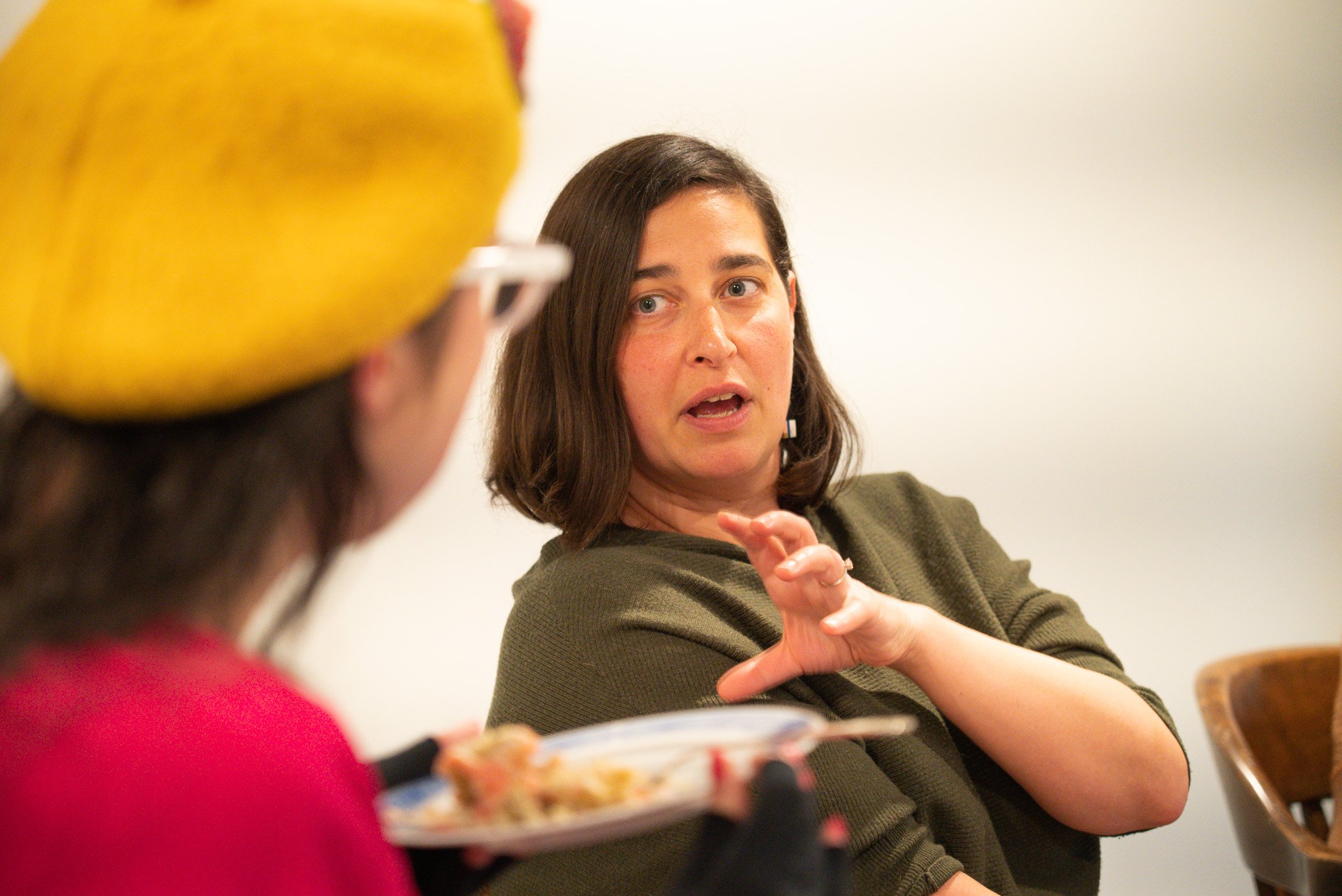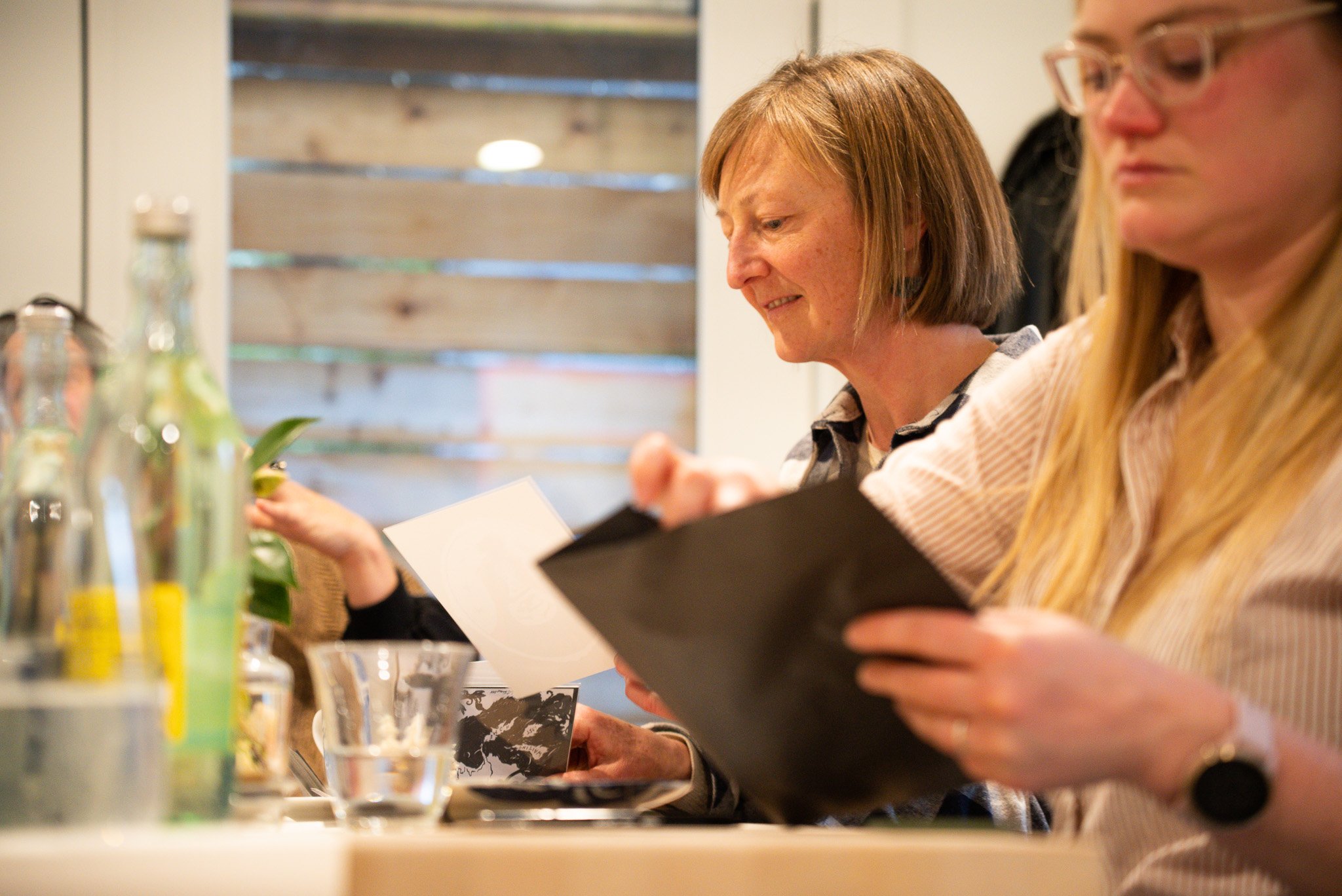Alyssa Glass
Creeping Museum co-founder Alyssa Glass (she/her) is a mixed-race Chinese American artist and writer who tells stories with paper and glue and words. Her work is informed by fairy tales and folklore, the secret magic waiting to be discovered in libraries and gardens and the spaces in between, and the winding path that leads into the darkest part of the forest. She believes in the duty of artists to radically imagine a better world.
When Alyssa joined a small group at the studio on April 6, 2023 for Cake, she brought more than just her presence. Her insightful contributions and genuine generosity created an environment where everyone felt comfortable sharing their thoughts on inspired design, real-life experiences, and everything in between. As the inaugural Cake guest, Alyssa set a high bar, not just with her charm, but with her ability to foster a space for open and authentic conversation.
Describe your ideal project.
The projects I want to work on are pretty much the same as the projects I want to experience as a visitor/audience member/passer-by. Anything that involves illuminating seldom-told or marginalized stories of the past that can help people better understand the present. Anything that involves activating public spaces in unexpected ways.
What’s the first story that you remember having an impact on you?
Wow, I can’t believe I’ve never thought about this before. What immediately came to mind was “Nestor the Long Eared Christmas Donkey,” a Rankin/Bass stop-motion Christmas special. It’s extremely dark, and I have a very vivid memory of running from the tv, sobbing inconsolably. The story featured characters and situations that were utterly unfamiliar and alien to my own experience (a devoted mother donkey who sacrifices herself to save her baby) yet the story pulled me in and I was able to experience very real emotions from watching these lights flicker across a screen. A very early (and traumatic) lesson in the power of story!
What interested your ten-year-old self?
I think most of my childhood was spent either reading or drawing. Like many kids who spent a lot of time alone, I had a pretty active imagination and lived in my head most of the time. Maybe unsurprisingly, I made up elaborate stories about everything around me—my toys, trees in the backyard, pieces of costume jewelry. At ten, I was probably spending my time reading stories about horses, or drawing horses. I was also the weird kid who wrote bad poetry about the greenhouse effect and pollution and nuclear armageddon. (In 5th grade I actually won a ribbon at the county fair for an illustrated poem about nuclear war, haha!)
How have those interests evolved into ‘today you’?
Evidently I’m still using words and art to express my hopes and fears and attempt to raise awareness of the issues that are important to me.
I’m a firm believer that we’re all storytellers—telling stories to ourselves and others is a fundamental part of how we experience the world as humans.
Describe your aesthetic. What are its roots? Its inspiration?
I don’t know if I have a really specific aesthetic. I’m constantly absorbing (either consciously or subconsciously) elements of whatever I’m reading. There are some constants that usually show up—woodland creatures, early- to mid-20th century design, heavy folklore and fairy tale influences—but typically there are objects or symbols or cultural elements I’m drawn to that reflect the themes of the thing I’m currently working on. For example, when I was really struggling with grief I found a lot of comfort in the imagery of the Victorian-era Spiritualism movement. As the rise in anti-Asian hate coincided with my tentative poking around the edges of generational trauma in my own family, I’ve been immersing myself in sort of a Chinese/Chinatown Art Deco aesthetic.
Is there a piece that exemplifies how you bring activism, aesthetic and storytelling together?
I try to bring these three elements into everything I make! But I think maybe one of my favorite Creeping Museum projects was a cross-disciplinary death-positive exhibition/salon event called The Garden of Grief. (The Death Positive movement is about normalizing conversations about death and dying, and acknowledging our own inevitable mortality.) Rebecca Reeves, a Philadelphia-based artist, created a solo installation for the miniature gallery featuring hand-beaded flowers inspired by Victorian mourning traditions. Megan Devine, author of It’s OK That You’re Not OK: Meeting Grief and Loss in a Culture that Doesn’t Understand, led a conversation about the importance of sharing stories of loss. Tarot artist and author Coleman Stevenson wrote a poem inspired by Rebecca’s installation, and I created a “bouquet” of my mother’s floral watercolors and paintbrushes for attendees to take home. The free library show was sold out, and Rebecca donated proceeds to the American Cancer Society in memory of her father. This was a micro-scale DIY event that was held on my front porch, but it was a dream project that culminated in an absolutely magical evening.
Another favorite project was a bookplate “exhibition” inspired by Shirley Jackson’s The Haunting of Hill House. A group of twelve cut-paper artists each selected a different passage to illustrate. The novel examines the ideas of “house” and “home,” and each artist found a nonprofit organization in their respective hometown that serves the local houseless population. The proceeds from the bookplates were split twelve ways between the organizations. The amount of money raised by the project was negligible, but for me it was more about the process.
There’s always going to be a gap between the world as it is and the world we’d like to live in. I try to exist in a way that makes that gap smaller, even in the tiniest ways.
What obstacles do you run into most consistently in your work? How do you work through them?
I’m typically my own biggest obstacle. Mental health/depression, and physical pain tend to put a damper on my creativity, or at least on making an idea into a reality. For me, making commitments to collaborate with others holding me accountable has been the single most effective means of overcoming depression-induced inertia. And once I’m excited and ready to start working on something, I try not to let arthritis hold me back or frustrate me too much. I simply try to find an alternate means of achieving what I want to achieve.
You work in many media. How do you choose the medium for the message?
It’s definitely dependent upon the “shape” of the story or idea I want to convey, and upon who I want to reach. For handmade objects, it really comes down to the physical limits of my body at that moment. I’ve been super grateful to have found technology (like my ipad and cutting machine) that allow me to continue to express myself when my hands don’t want to cooperate. I’m no longer physically able to spend hours hunched over a worktable, and when my arthritis is really bad I can’t even hold a pencil for longer than a few moments.
You’ve worked on installations for major cultural institutions and created a tiny-but-mighty museum. Can you have an impact at any scale?
Yes! Any scale. And what better place to start than in your own (literal) front yard? I believe there can be a lot of power in placemaking—changing a nondescript corner into a sort of landmark that draws regular visitors and becomes part of their own neighborhood stories, taking on a life of its own.
Storytellers—and artists and creatives in general—are the folks who have the ability to imagine alternate futures that are better and more just, and to convey those ideas to others. This is how we change the world a teeny bit at a time.
Cake photographs: KW Productions


